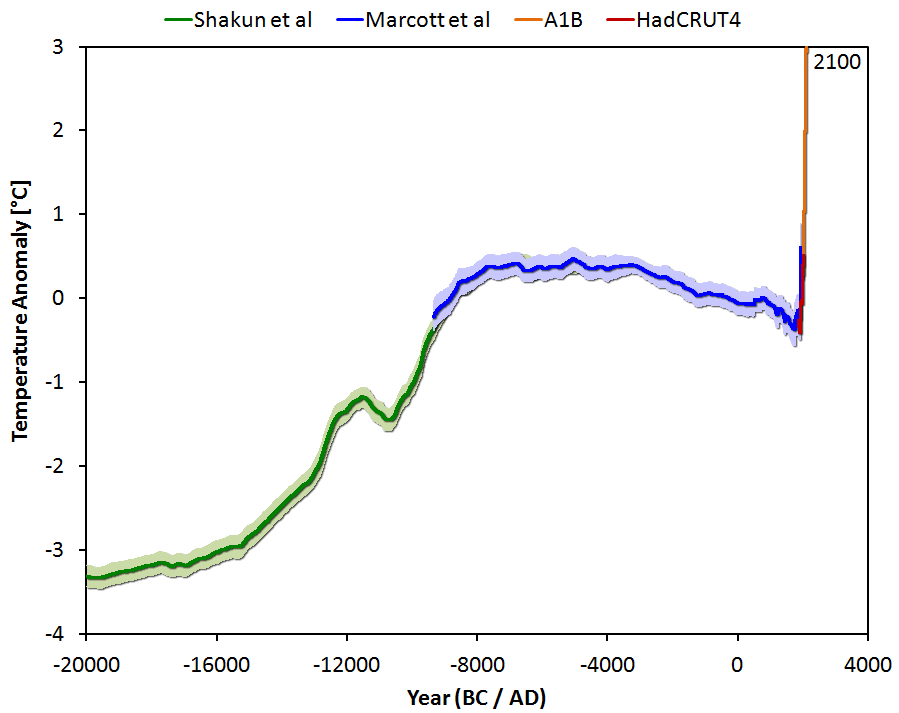Climate Change - The last 22,000 years of global temperature change

This graph shows how temperatures have changed over the last 11,000 years, since the end of the last glacial stage.
The graph uses data from modern temperature records, plus information about the past from a research paper that combined data from over 70 different scientific studies.
The next graph adds data from even further back in time:

The green part covers the time as the last glacial stage was coming to an end, and the great ice sheets were melting.
The last glacial stage ended about 10,000 years ago.
Then, for nearly 5,000 years, global temperature was surprisingly stable.
In the next 5,000 years, up to about 1800, global temperature declined by about 0.7 deg.C.
There were some variations in that slow decline:

There were some variations in that slow decline:

From 1800 until 2000, temperature rose by about 0.8 deg.C, according to the World Meteorological Organisation.

Temperatures now are higher than during any part of the Holocene.
The United States National Atmospheric and Oceanic Administration has produced this graphic of the modern instrumental temperature record.
Global surface temperature anomaly for 2015 so far is in green - the 6 previous warmest years are in red.

One excellent source of information on changes in global temperatures is Berkeley Earth.
The recent rise in temperature has happened as industrial societies have burned fossil fuels.

This chart shows the annual average global temperatures from NASA's Goddard Institute for Space Studies (GISS)

One thing to note ….. every La Nina ‘year’ since 1998 was warmer than every El Nino ‘year’ before 1995.
Temperatures now are higher than during any part of the Holocene.
Global surface temperature anomaly for 2015 so far is in green - the 6 previous warmest years are in red.

One excellent source of information on changes in global temperatures is Berkeley Earth.
The recent rise in temperature has happened as industrial societies have burned fossil fuels.